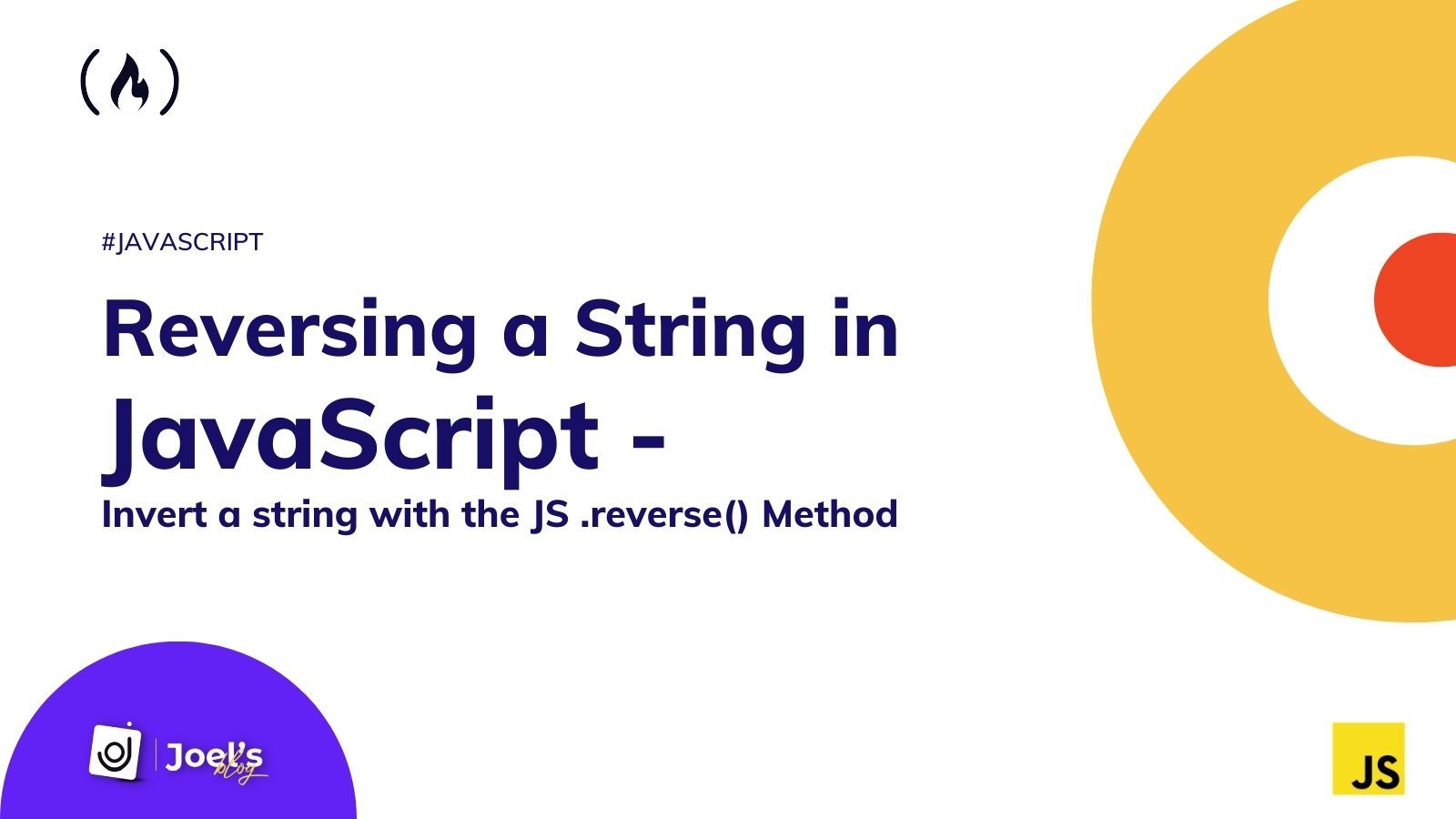Reversing strings in JavaScript is something you'll need to do often on your web development journey. You might need to reverse a string during interviews, when solving algorithms, or when doing data manipulation.
We will learn how to reverse a string in JavaScript using built-in JavaScript methods as well as the JavaScript reverse() method in this article.
For those in a rush, here is one line of code to help you reverse a string in JavaScript:
let myReversedString = myString.split("").reverse().join("");
Or you can use this:
let myReversedString = [...myString].reverse().join("");
Let’s now discuss these methods and the role they play in helping us reverse strings in JavaScript.
How to Reverse a String With JavaScript Methods
Using JavaScript methods to reverse a string is simple. This is because we will use only three methods that perform different functions and are all used together to achieve this one common goal.
In general, we split the particular string into an array using either the spread operator or the split() method. Then we use the reverse() method, which can only be used to reverse elements in an array. And finally, we join this array together as a string using the join() method.
Let's try each of these methods separately.
How to Split a String in JavaScript
There are two major methods of splitting a string in JavaScript: using the spread operator or the split() method.
How to Split String With the split() Method
The split() method is a very powerful method which you use to break a string into an ordered list of substrings based on a given pattern.
For example, if we have a sting of months separated by commas that we want to split up into an array of months, we could have something like this:
const months_string = 'Jan,Feb,Mar,Apr,May,Jun,Jul,Aug,Sep,Oct,Nov,Dec';
console.log(months_string.split(','))
This will output the following array:
["Jan","Feb","Mar","Apr","May","Jun","Jul","Aug","Sep","Oct","Nov","Dec"]
In our case our string might be a regular string with nothing separating each character. Then all we have to do is pass an empty string with no spaces, as seen below:
let myString = "Hello World";
console.log(myString.split("")); // ["H","e","l","l","o"," ","W","o","r","l","d"]
console.log(myString.split(" ")); // ["Hello","World"]
How to Split String with the Spread Operator
The spread operator is an ES6 addition that makes it easy to split up a string into an array. It does way more than just splitting a string:
let myString = "Hello World";
console.log([...myString]); // ["H","e","l","l","o"," ","W","o","r","l","d"]
How to Reverse an Array of Strings with the reverse() Method
So far, we've learned how to split a string. And the split() method, of course, divides the string into an array. And now you can apply the reverse array method to it, as shown below:
let myString = "Hello World";
let splitString1 = myString.split("");
let splitString2 = myString.split(" ");
console.log(splitString1.reverse()); // ["d","l","r","o","W"," ","o","l","l","e","H"]
console.log(splitString2.reverse()); // ["World","Hello"]
We can also apply this to the spread operator this way, but we will no loner be able to define how we want to split our string:
let myString = "Hello World";
console.log([...myString].reverse()); // ["d","l","r","o","W"," ","o","l","l","e","H"]
How to Join an Array of Strings Together with the join() Method
This is another powerful method that works in the opposite direction of the split() method. It creates a new string by concatenating all the elements in an array that are separated by commas or any other string specified as a separator.
For example, if we have an array of strings that we want to join into a single string separated by a dash (-), we can do something like this:
let monthArray = ["Jan","Feb","Mar","Apr","May","Jun","Jul","Aug","Sep","Oct","Nov","Dec"];
console.log(monthArray.join("-"));
And this will return the following:
"Jan-Feb-Mar-Apr-May-Jun-Jul-Aug-Sep-Oct-Nov-Dec"
In our case, we have already reversed the string, and we don’t want anything in between. This means that we will just pass an empty string this way:
let myString = "Hello World";
let splitString1 = myString.split("");
let splitString2 = myString.split(" ");
let reversedStringArray1 = splitString1.reverse();
let reversedStringArray2 = splitString2.reverse();
console.log(reversedStringArray1.join("")); // "dlroW olleH"
console.log(reversedStringArray2.join("")); // "WorldHello"
At the end, we can perform all these operations with just one line of code by bringing all the methods together in the proper order:
let myString = "Hello World";
let myReversedString = myString.split("").reverse().join("");
console.log(myReversedString); // "dlroW olleH"
And the same applies to the spread operator:
let myString = "Hello World";
let myReversedString = [...myString].reverse().join("");
console.log(myReversedString); // "dlroW olleH"
Conclusion
In this tutorial, we learned how to reverse a string using the reverse() method, as well as other JavaScript methods. We also saw how the methods work with examples.
Have fun coding!

